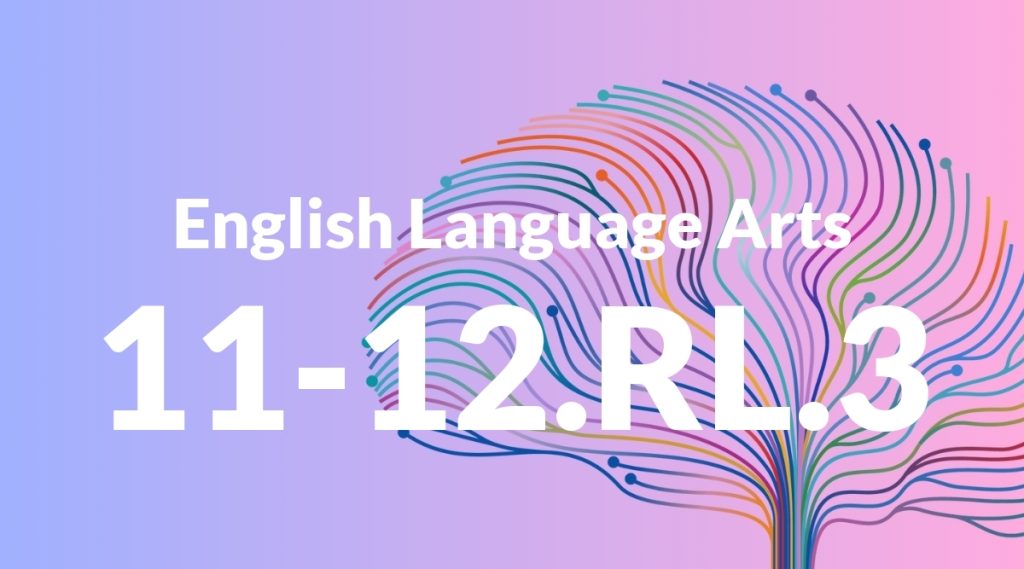Standard: 11-12.RL.3 – Analyze the impact of the author’s choices regarding how to develop and relate elements of a story or drama (e.g., where a story is set, how the action is ordered, how the characters are introduced and developed).
Grade level: Grade 11-12
Subject: English Language Arts
Domain: Reading: Literature
Teacher Overview
This standard focuses on analyzing how an author’s choices in developing and relating elements of a story or drama impact the overall narrative. Understanding these choices helps students appreciate the craft of storytelling and enhances their analytical skills. Students should be familiar with basic literary elements and have experience analyzing texts. This includes understanding plot, character, setting, and theme, as well as being able to perform close readings.
Mastering this standard will enable students to engage in more sophisticated literary analysis, preparing them for advanced studies in literature and enhancing their critical thinking skills.
Common Misconception 1
Some students may think that all elements of a story are equally important. This is incorrect because authors often emphasize certain elements to convey specific themes or messages. For example, in some stories, character development may be more crucial than the setting.
Intervention 1
To address this misconception, provide students with various texts and guide them in identifying which elements are most critical to the story’s meaning. Use discussions and written reflections to reinforce this understanding.
Common Misconception 2
Another common misconception is that the setting is merely a backdrop and does not influence the plot or characters. This is not true, as the setting can significantly impact the story’s events and character behaviors.
Intervention 2
To correct this, use texts where the setting plays a crucial role in shaping the plot or characters. Discuss with students how changing the setting would alter the story and its meaning.
Prerequisite Knowledge
Students should have a foundational understanding of basic literary elements such as plot, character, setting, and theme. They should also be familiar with different genres of literature and have experience with close reading and textual analysis.
Subsequent Knowledge
After mastering this standard, students will be able to critically evaluate more complex texts and analyze how authors use literary techniques to convey meaning. They will also be better prepared for college-level literary analysis and discussions.
Instructional Activities
- Have students compare different adaptations of the same story.
- Assign character analysis essays focusing on development and introduction.
- Conduct group discussions on how setting impacts the plot in different stories.
- Use graphic organizers to map out the structure of various narratives.




